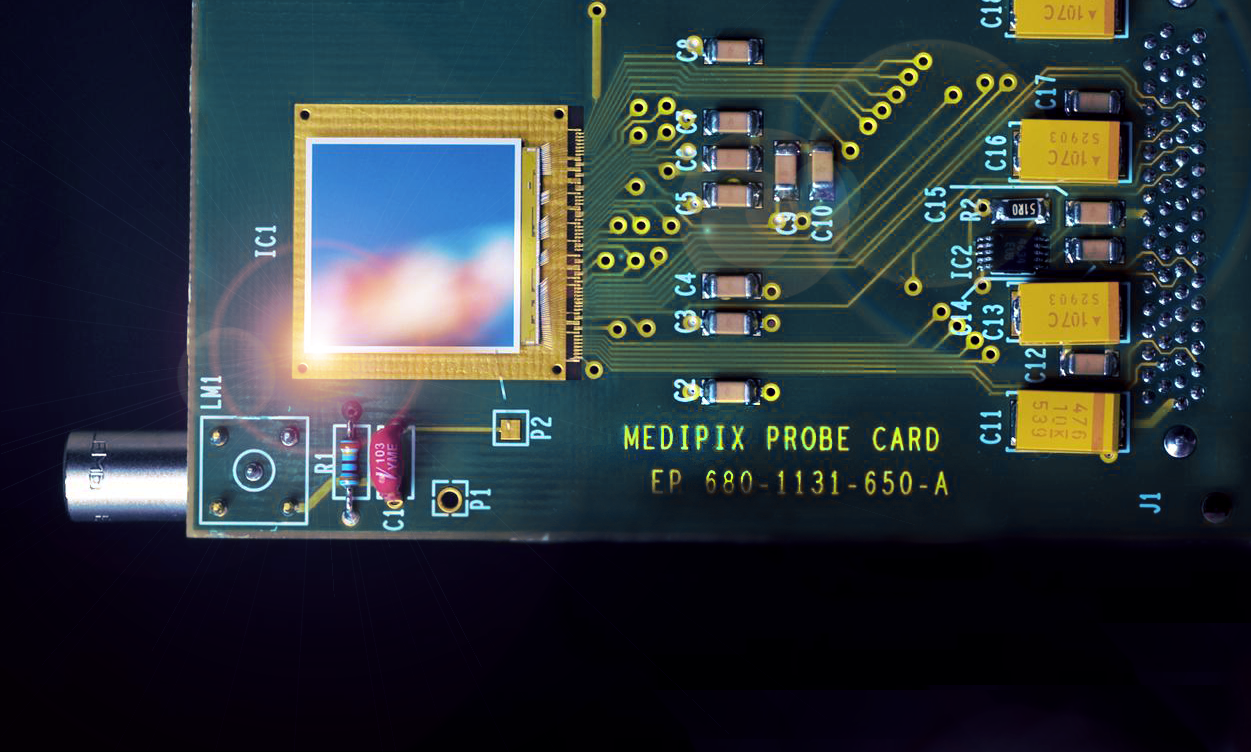The Timepix2 pixel can be programmed to operate in one of several modes depending on the application requirement, offering increased complexity compared to the predecessor Timepix ASIC. Readout is frame-based. The arrival time (Time-of-Arrival – ToA) and charge deposit information (Time-over-Threshold – ToT) can be recorded for each hit when used in sequential read/write mode. In continuous read/write mode one can chose between ToT, ToA or event counting. There are a total of 28 bits per pixel which can be allocated depending on the read/write mode chosen and the requirements of the application.
Advantages & Applications
Features
- Pixel size 55μm x 55μm.
- 256 x 256 pixels.
- 28 bits/pixel.
- Simultaneous ToT and ToA.
- Separate ToT and ToA clock frequencies.
- Readout dead-time-free modes.
- Frame-based sequential or continuous read/write modes.
- Digital and analogue pixel masking available per pixel (turn off power consumption in unused pixels).
- Linear front-end gain, possibility to configure for ‘logarithmic’ gain mode only in positive polarity.
- 3-side buttable.
- Wire bonding pads can facilitate TSV processing.
Applications
- X-ray imaging
- Material analysis
- Particle track reconstruction
- Non-destructive testing
Specifications
|
CMOS technology |
0.13μm |
|
Pixel size |
55μm x 55μm |
|
Pixel matrix |
256 x 256 |
|
Detector polarity |
Electron collection ◦ Leakage current compensation optimal (IDET > IKRUM) ◦ Non-monotonicity of the ToT vs Qin Hole collection ◦ Leakage current limited (IDET < IKRUM/2) ◦ Adaptive gain mode available |
|
Leakage current |
Electron collection: Up to 12nA/pixel (non-uniform) Hole collection 2nA/pixel |
|
Peaking time |
~100ns (Adaptive gain OFF) ~200ns (Adaptive gain ON) |
|
Noise |
61e- rms |
|
Threshold variation |
~40e rms after trimming 5-bit adjustment |
|
Minimum operating threshold |
~600e- |
|
Power consumption |
5µA/pixel @1.2V i.e., ~165mW/cm2 (low power mode) Digital 500mW Total 900mW |
|
Analogue supply voltage |
1.2V |
|
ToA bin size |
10ns |

